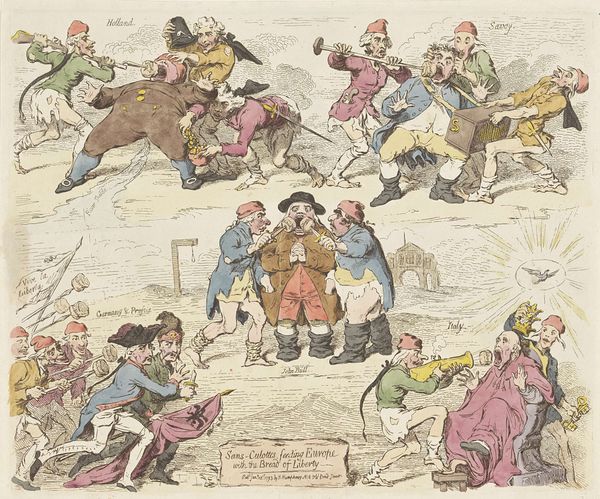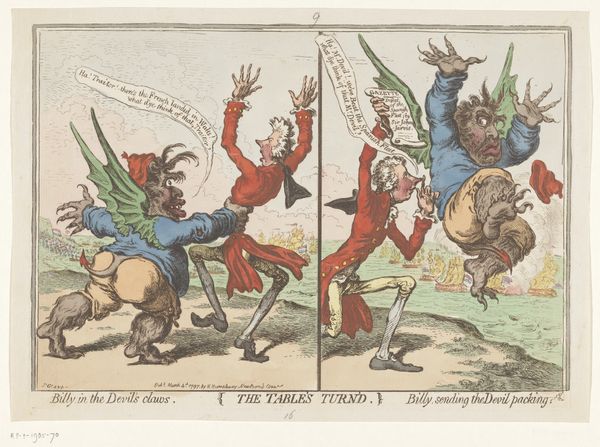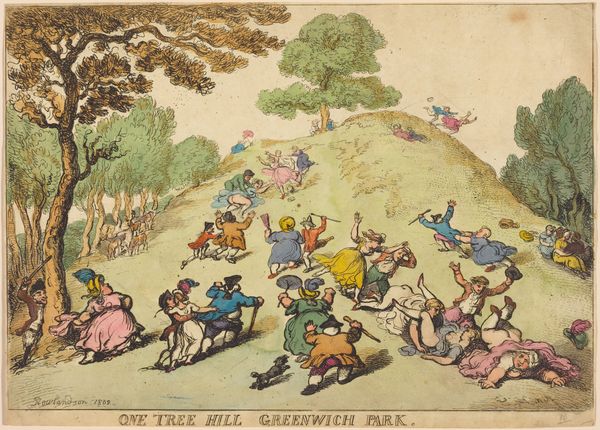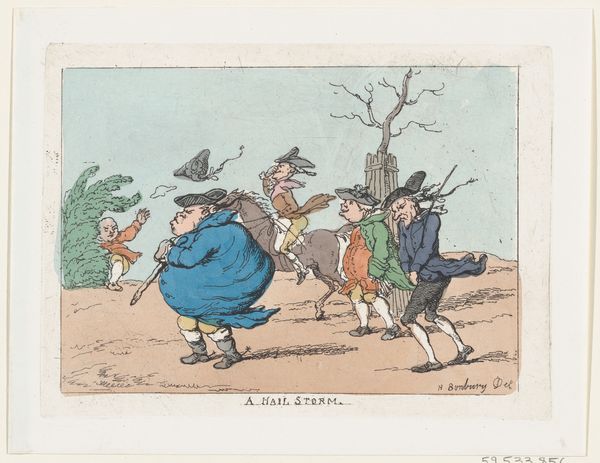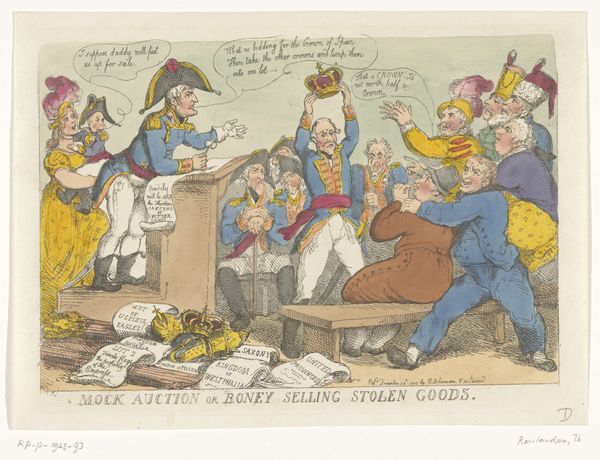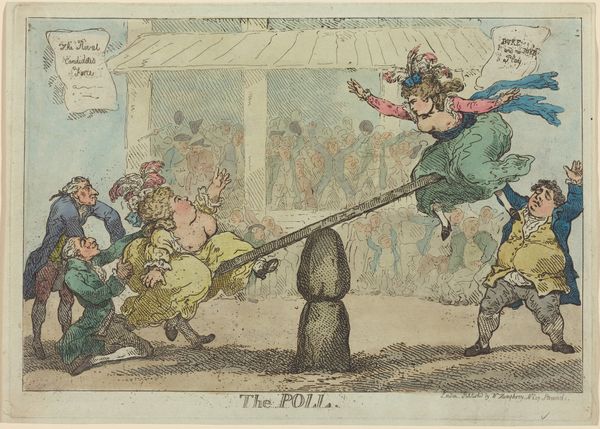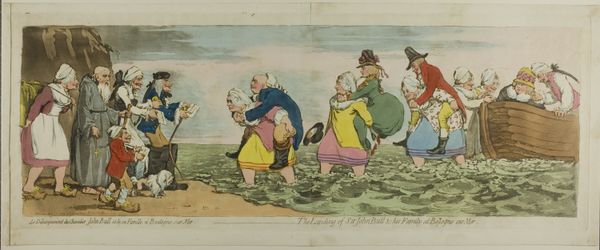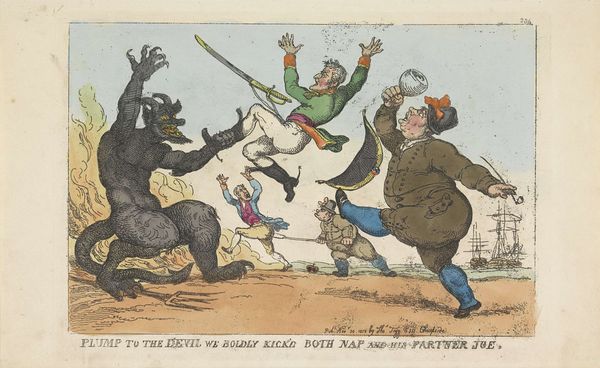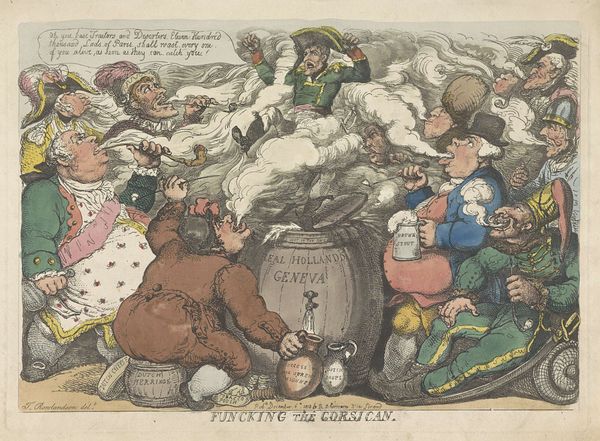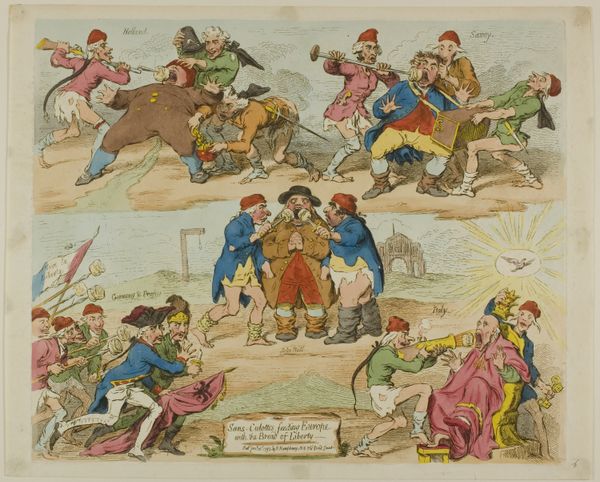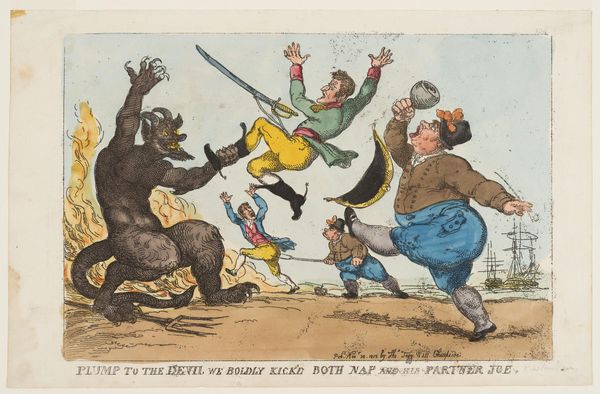
print, etching, watercolor
#
portrait
# print
#
etching
#
caricature
#
cartoon sketch
#
watercolor
#
romanticism
#
watercolour illustration
#
history-painting
Dimensions: height 235 mm, width 338 mm
Copyright: Rijks Museum: Open Domain
Curator: Looking at Thomas Rowlandson's "The Corsican Toad Under a Harrow," possibly from 1813, the first thing that strikes me is the level of satire conveyed. What is your initial take on this print? Editor: It feels immediately farcical, doesn't it? I find the composition visually quite unsettling. All that straining! Is it history-painting, or just caricature? Curator: Well, it certainly blends genres. The etching, with watercolor washes, uses the caricatural form as a potent form of political commentary. Look at the material choices—printmaking allowed for wider dissemination of these views. And, don't miss how the layering of etching and watercolour helps emphasize specific elements—it is all strategically constructed! Editor: Precisely! The etching process itself enables the mass production of such dissenting narratives. Napoleon— "the Corsican toad"—being dragged under the "harrow," which looks decidedly like agricultural tool. What commentary is Rowlandson attempting here through material manipulation, about empire, agriculture and the little people that pay for it? Curator: It’s clearly a visual metaphor for the crushing defeat Napoleon faced. The ‘harrow’ not only injures, but it’s also literally leveling him! It’s fascinating how Rowlandson employs etching and watercolor to mock a historical figure, turning a political event into popular culture. The paper stock would’ve been fairly common, implicating this critique within daily life and mass distribution. Editor: And notice how the physical act of pulling, the labor evident in the strained postures of the figures dragging Napoleon. We are meant to consider the back-breaking work and lives ended to benefit the rich and famous—like Rowlandson's "Corsican toad," being dragged and humbled in public, after all the many lives this figure destroyed. What statement about celebrity culture in political art does this suggest? Curator: Absolutely, the means of its creation contributes directly to its critical intent. It democratizes commentary through reproducibility. Editor: Indeed, this artwork allows us to question not just the figures depicted but the modes through which power is constructed and resisted. I will certainly continue to question our leaders. Curator: For me, seeing this blending of craft and commentary reinforces the power in subverting and making art accessible.
Comments
No comments
Be the first to comment and join the conversation on the ultimate creative platform.
